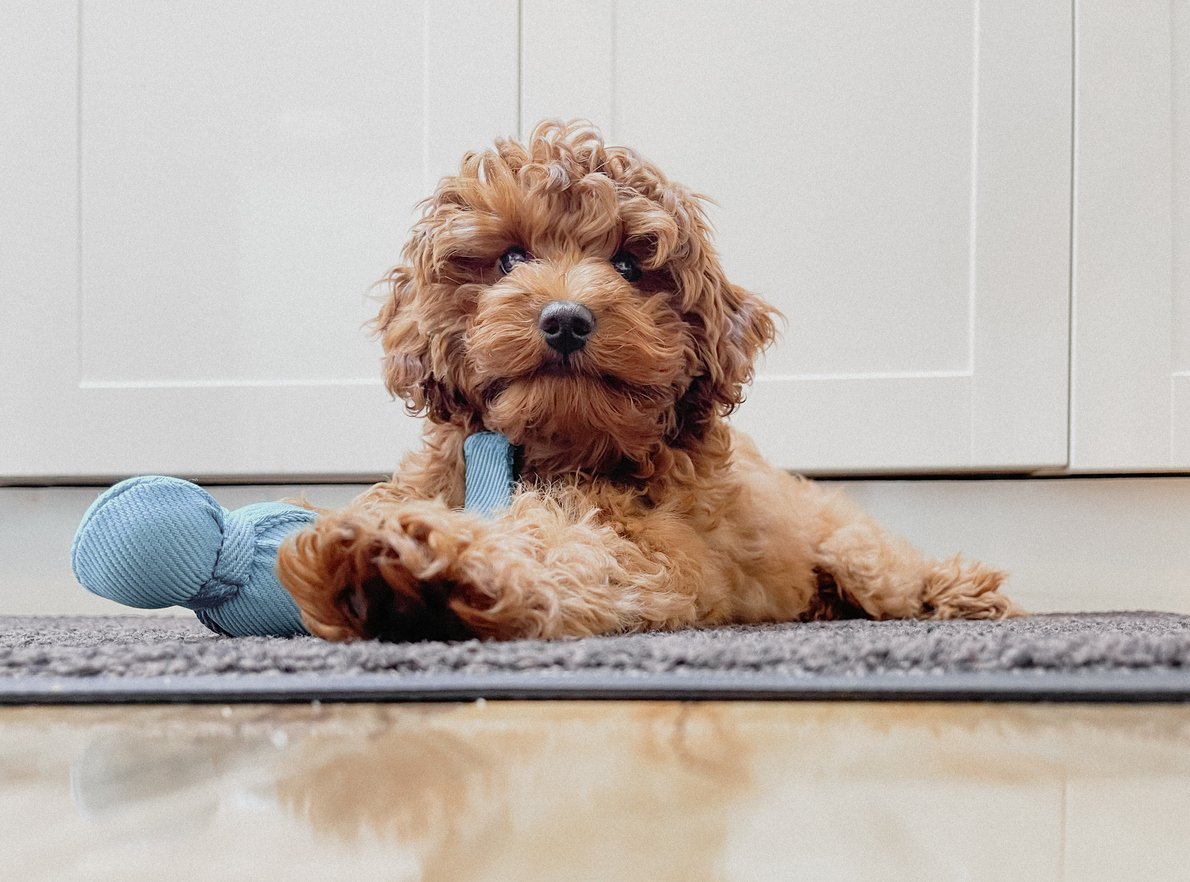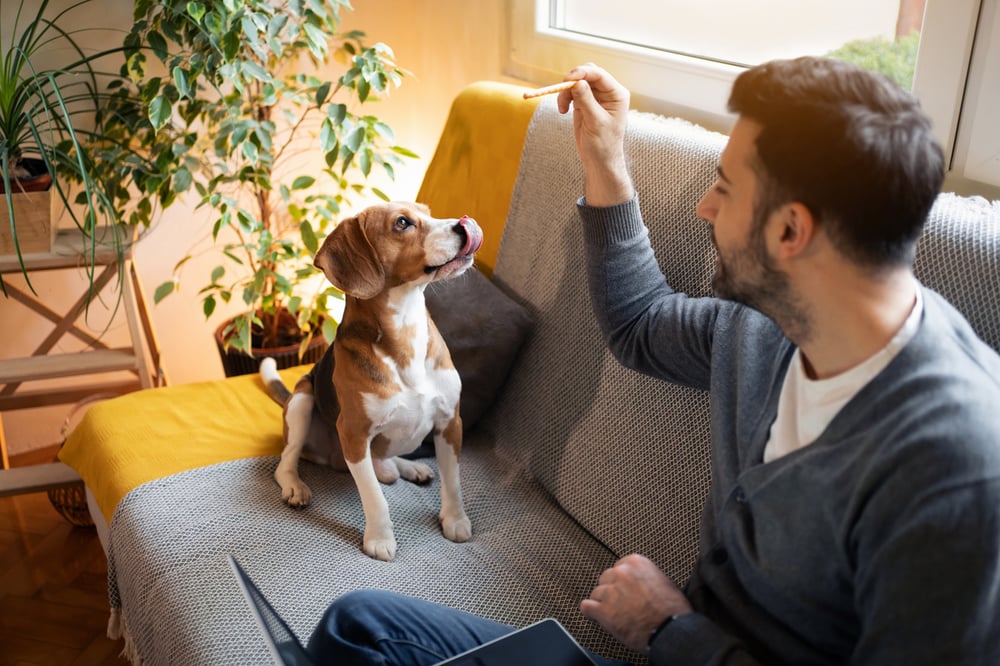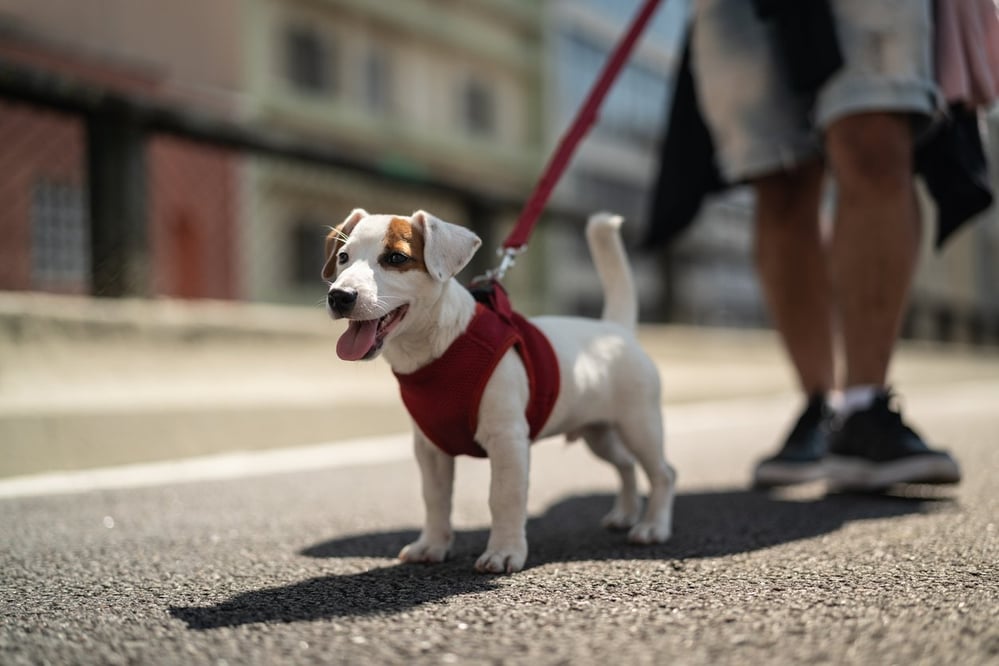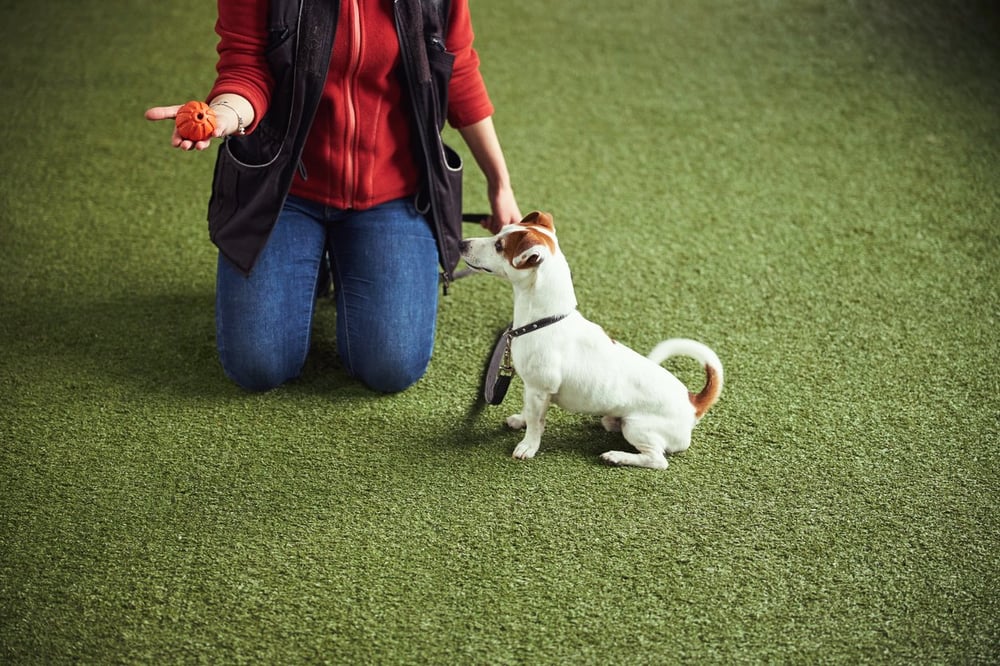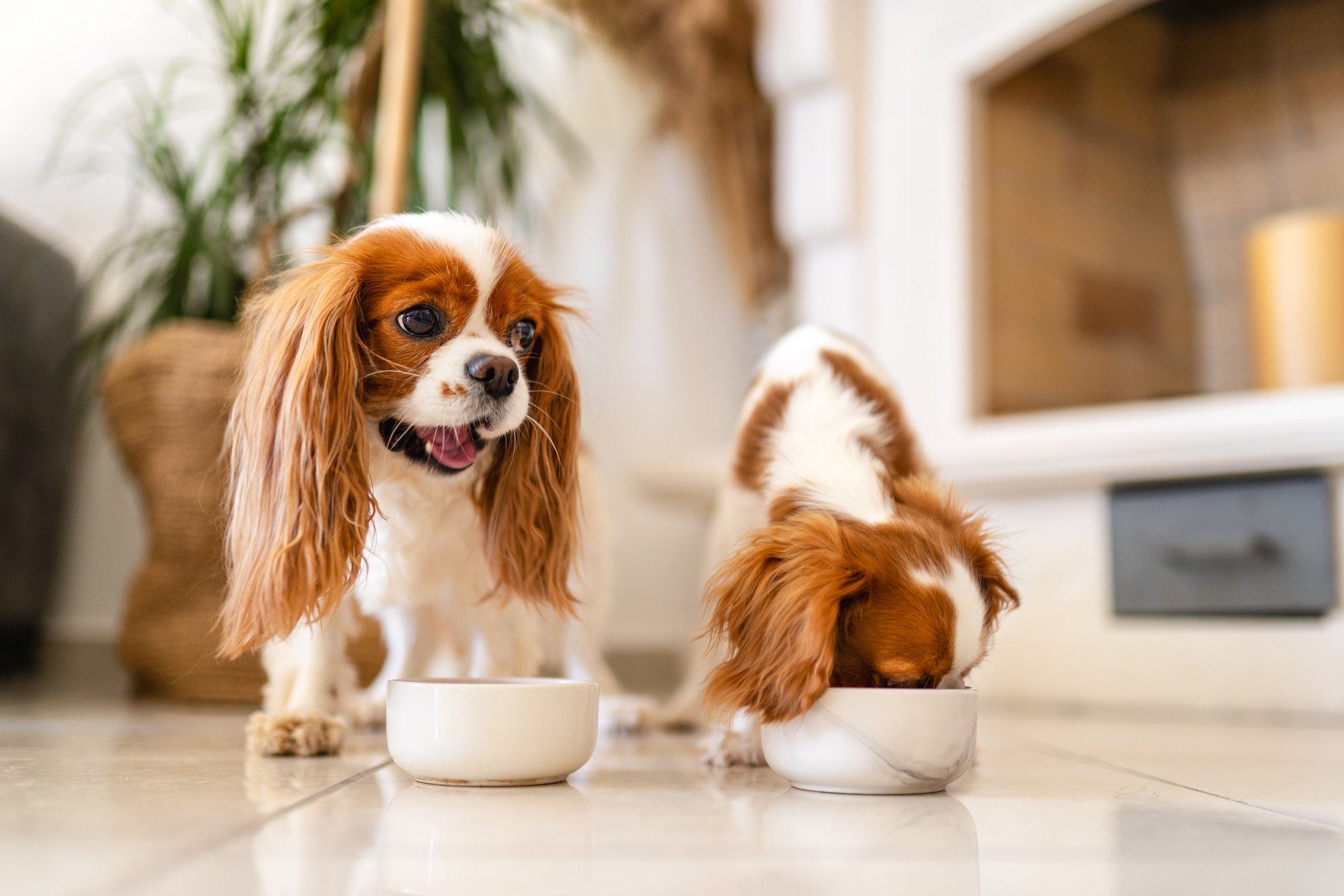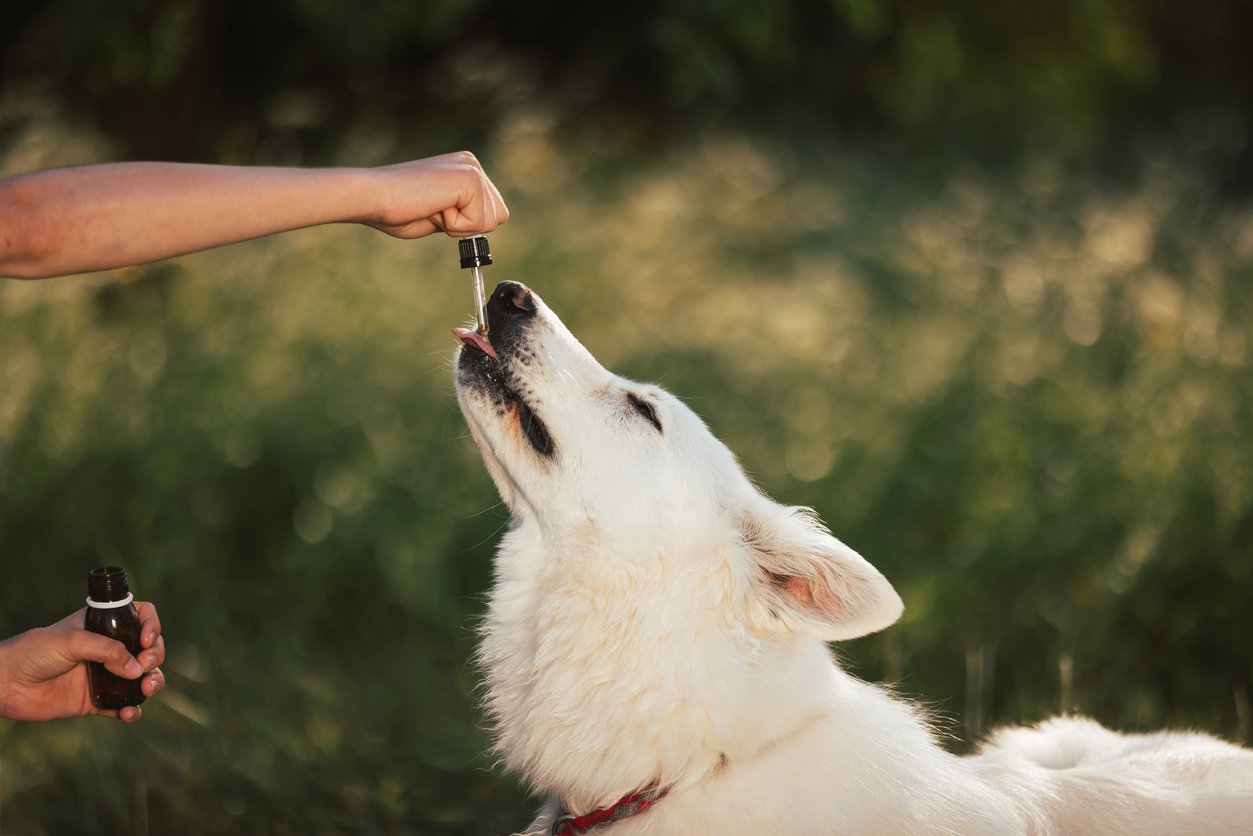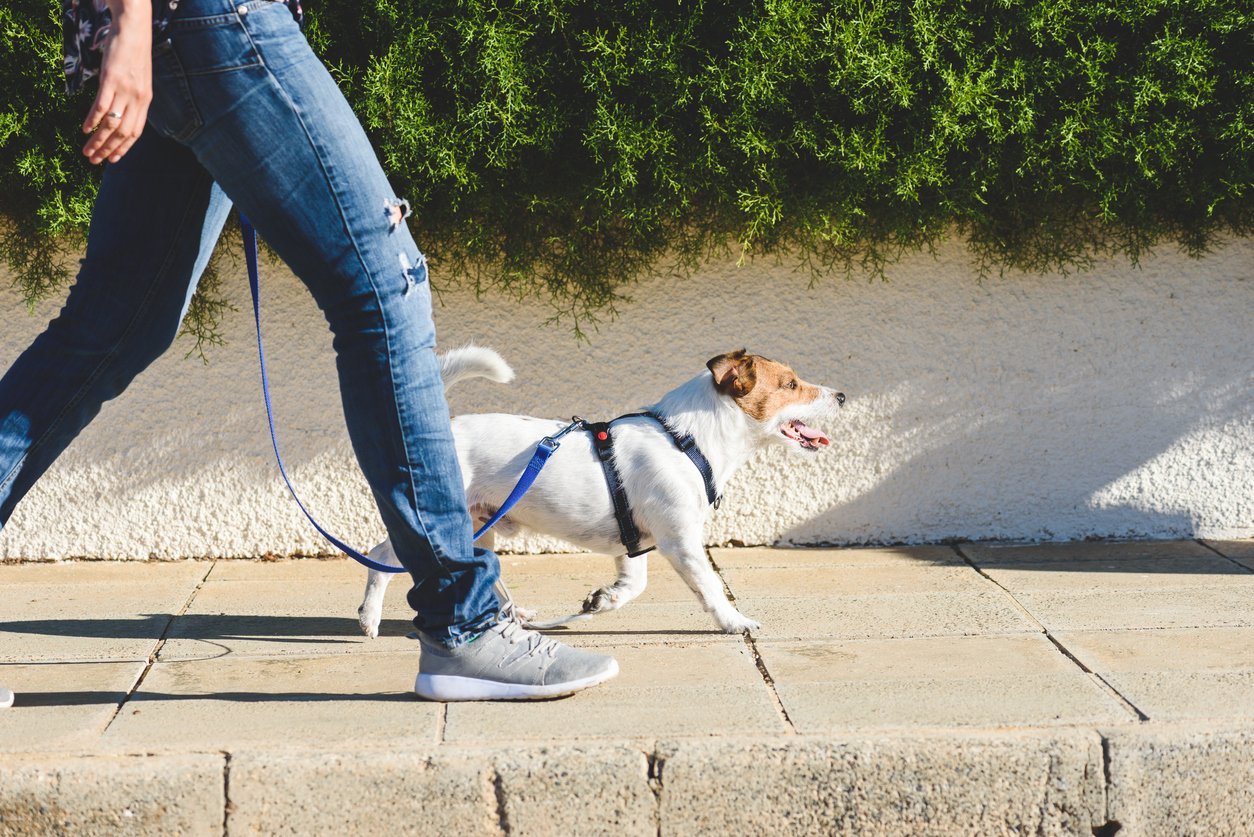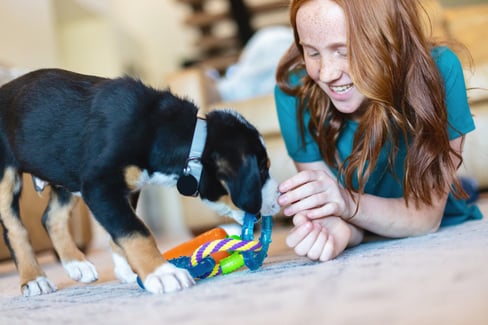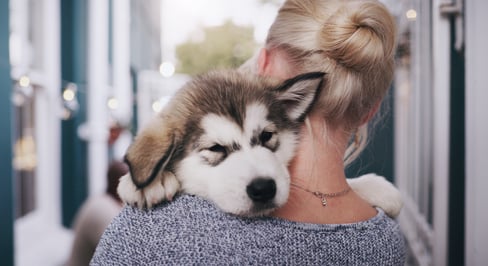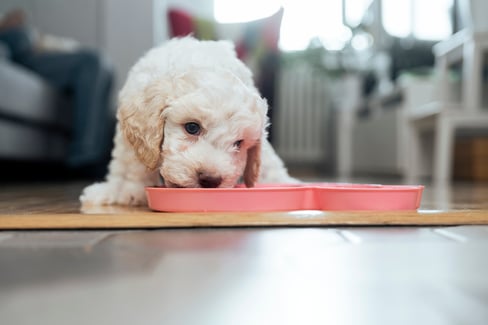Table of Contents
Puppies!
Even the word probably makes you smile. These little bundles of cuddly joy are like sunshine wrapped up in a furball package.
But as anyone who has a puppy can attest, they do require some work if you want to keep them healthy, happy, and of course, well-behaved. In this post, we’re going to be sharing all the things you need to know when bringing home your puppy (including a handy checklist) so that you can have the best chance at success possible.
Ready to get pup-pared? Let’s get started!
How to Prep for Puppy
Before you bring your new puppy home, it’s important to make sure that you know how to prep for a new puppy. By being prepared, you can ensure that that transition into your home is a smooth one for both your puppy and your household.
While your first instinct may be to go on a shopping spree and buy your new furry family member toys, treats, and puppy stuff galore, there are a few things you should take care of first.
Let’s go over the crucial steps in your puppy preparation checklist:
- Assess your current living and lifestyle situation. Is it compatible with bringing home a puppy?
- Discuss it with your family, especially kids. Get them excited and ready to handle the puppy handling rules and expectations.
- Research breeds and reputable, safe breeders.
- Designate some space and time to set up a puppy zone.
- Research local puppy training classes.
- Dog-proof your home in case, your new pup likes to chew anything and everything.
- Find a veterinarian if you don’t already have one.
- Go shopping for puppy supplies.
- Ensure you’re ready to pick them up and bring them home!
Bringing home a puppy is an exciting time. But it can also be stressful to prepare for your new furry family member. Make sure you take the time to go through each of the steps on the puppy preparation checklist to ensure they are happy, safe, and comfortable, and your household is equipped with the supplies and knowledge to do so!
Puppy Preparation List
So, you’ve finally made it to the shopping step in your new puppy preparation. You could easily go overboard and go on a shopping spree with tons of cute stuff for your puppy. Whether it’s toys, treats, or the latest gizmos, the burgeoning pet wellness, and lifestyle industry is exploding with options for your special furry friend.
We’re going to share a puppy prep shopping list in just a moment, but first, you want to make sure you keep some important guidelines in mind.
In order to keep it simple when you head to your local pet store, keep the following in mind when shopping for puppy preparation:
- Do your research: Look into some online research about what brands and types of pet products are highly recommended and in your budget. That way, you can narrow down your options and avoid being overwhelmed.
- Compare your options: Once you’ve narrowed down a shortlist of trusted options, spend some time comparing them to one another to make sure you end up with the best option for your needs.
- Go in with a puppy preparation shopping list: This may be the most imperative step of all – you should not enter a pet store or online shopping session without a list! It’s too easy to get pulled off the track and buy more than you need.
Speaking of lists, let’s go over what you should really be adding to your cart for puppy preparation.
Puppy Food & Supplements
Choosing the right puppy food is one of the most important decisions you will make for your new family member. A good diet will ensure that your puppy grows up strong and healthy and helps prevent diseases like hip dysplasia and heart problems later in life.
There are many options available when it comes to choosing the right puppy food. However, it can be confusing to know which one is best for your growing pup.
Choose food during puppy prep shopping that contains:
- More calories to compensate for the amount of energy they expend when they are growing and playing. About half of the calories puppies consume are used for tissue growth and development.
- Select a food formulated specifically for the size of your puppy. Large-breed puppy food contains a specific ratio of calcium and phosphorus to ensure proper bone development and prevent joint disease, while smaller breeds require different ratios of the same ingredients.
- To aid in a growing puppy’s eye, ear, and brain development, puppy diets should contain higher levels of essential fatty acids, especially DHA. There is evidence that puppies fed diets high in DHA have improved memory and training ability.
You can also consider adding a dog supplement to your puppy’s diet. These power-packed dietary supplements can help combat everything from tummy troubles to joint and soft tissue development. The latter is particularly important during development and growth. Healthy, strong, soft tissues, muscles, and joints that form properly are less likely to lead to problems later in life, such as luxating patellas, hip dysplasia, and arthritis.
Choose a high-quality, 100% active ingredient formula that offers your pup ingredients like glucosamine for dogs, alongside MSM and chondroitin. Our TRI-ACTA for pets supplement is designed for growing dogs and comes with a small but effective serving size you can adjust easily as they grow.
TRI-ACTA for Pets
A proactive approach for developing and younger adult pets to maintain optimal joint health mobility, minimize inflammation and fend off age-related ailments.
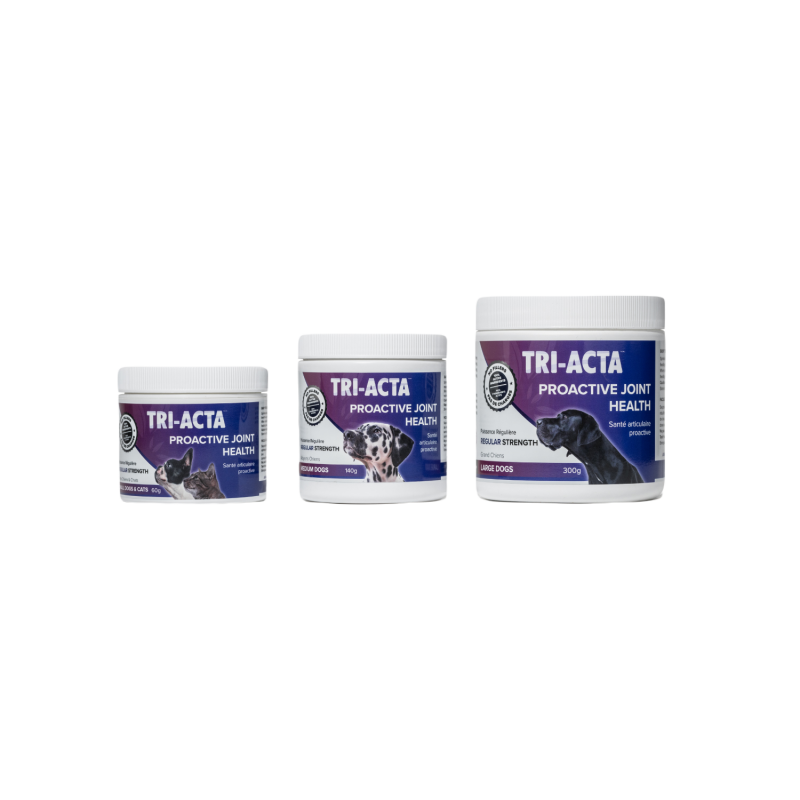
Puppies require different nutrients than adult dogs do, so if you’re unsure about what kind of food is best for your puppy and how to supplement their diet, consult with your veterinarian.
Crate & Bed
Everyone needs a place to lay their head, especially your new furry family member. A crate is one of the most important purchases you can provide for your puppy.
Why, exactly?
It’s a safe place for them to sleep and feel secure. The crate will help them feel confident when you leave home or if they need some time out of the way for behavior training purposes. Adding a soft, cozy dog bed, blanket, and their favorite toy or comfort items can make it feel like a snuggly nook just for them.
You can use it as a portable den so that when you are out and about with your puppy, they have their own special place to call “home.” Just like humans, dogs instinctively try to keep their sleeping areas clean so using a crate while housebreaking your dog helps them learn bladder control and strengthen bowel muscles making housebreaking less difficult.
Dogs may suffer unnecessary stress later on in life if they are not crate-trained early on. When older dogs have illnesses like incontinence, dog arthritis, or cognitive dysfunction and need to spend more time in a safe, crated space, they do not need the additional stress of learning a new set of rules. Introduce crate training early for the best chance of making you and your pup less stressed out!
There are several types of crates available including:
- Wire
- Soft-sided
- Wood
- Plastic
Depending on the size of your dog, their breed, and where your crate is being stored, you may have a preference for one type over another. All that really matters is that your dog is comfortable and safe!
To get the right size crate, refer to your puppy’s approximate adult size if possible, as they may be small now but will grow into the space. Add 4″ to both the length of their snout to the base of their tail as well as their sitting height. This gives you an approximation of how much space your pup needs in a crate.
Training Treats
Treats are a great way to reward your pup during training, and you’ll want to have a variety of treats on hand. If you’re using treats as a reward in training sessions, be sure that they are small in size and age-appropriate. A large treat will take your puppy longer to eat and can lead to digestive problems or even an upset stomach if he eats too much too fast. Plus, too many extra calories can lead to your dog developing weight troubles.
Treats should be given only when training is taking place – not as an everyday snack – and only after completing the task for which the treat was offered. Treats should also not be given when doing something you don’t want your dog to do (like jumping up) because this could then become associated with poor behavior rather than good behavior!
Follow these guidelines for choosing a treat during your puppy prep shopping:
- Treats should be soft and easy to chew
- Treats should be small and bite-sized
- Treats should contain wholesome, natural ingredients
By choosing an appropriate treat for your pup, you can avoid choking hazards and tummy troubles alike. And if you’re unsure what would be a good option for your sweet puppy, ask your vet for recommendations.
Food and Water Dishes
Food and water dishes are a must-have for your new puppy. They need their own place to chow down and hydrate in the house. Usually, one of the most common places for a feeding station is the kitchen or laundry room, where messes can be cleaned up easily, and trust us, puppies can be a little messy when they are first learning their table manners! That’s why many pet parents pick up a dog food bowl that has an integrated silicone mat or a separate placemat for their dog’s dishes to sit on.
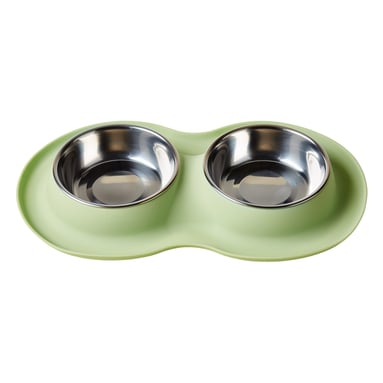
Via PetValu
It’s important to make sure that your dog’s food and water dishes are easy to clean so they don’t harbor bacteria. Just like for humans, there are many kinds of materials food and water dishes can be crafted from.
When doing your puppy prep shop, you may see food and water dishes made of:
- Stainless steel
- Plastic
- Ceramic
- Silicone
Look for dishwasher-safe options like stainless steel if you want to avoid doing dishes by hand every day, and keep in mind that not all plastic and silicone options will be able to go in the dishwasher. Ceramic options can be easy to clean and look aesthetically pleasing in your space but may be tricky to keep in one piece if you have a growing, clumsy puppy in the house.
You may also want to consider slow feeder bowls if you have a puppy who gulps down its food too fast, which can lead to bloat and discomfort for your dog. These types of bowls have special dividers (usually in a puzzling, winding pattern) that force the dog to eat more slowly, which can help them avoid pet health issues later.
Toys Appropriate for Breed and Age
During your puppy prep shopping, you will, of course, need to pick up some toys for your puppy. However, you don’t want to pick just any toy. Hard toys may break their soft puppy teeth, while soft toys can cause gastrointestinal obstruction if they are accidentally eaten. So which toys are safe for them to play with?
A good toy is one that satisfies your pup’s chewing, fetching, solo play, or interactive play needs. Not only can you teach your pup a thing or two during playtime (like fetch), but interacting with them during this time helps form a bond between you and your fur baby. You should try to supervise during playtime to make sure your dog doesn’t accidentally eat or swallow parts of the toy, as well.
Ideally, you want to find toys during puppy prep shopping like:
- Those made from hard nylon
- Balls and chew toys that are made of hard rubber
- Puppy “chewers” (softer nylon bones are particularly common)
- Food puzzle toys
When dogs are young, avoid things like rawhides, pig’s ears, and soft foam-filled toys to skip scary choking hazards.
Walking Supplies
Before you bring your puppy home, you’ll need to purchase a collar and leash. These are essential items that every puppy must have.
Collars are important because they help identify your dog if he or she ever gets lost, but also because they provide an easy way for you to keep a hold of your furry friend when going on walks. Leashes are also very important because they allow people to walk their dogs without worrying about them running out into traffic or getting into trouble with other animals or people.
If you don’t already know what kind of collar or harness will work best for your puppy prep, here are a few things to keep in mind, outlined in the table below.
| Dog Walking Equipment | What to Consider |
| Collar | Collars come in many different styles and materials, including cloth and leather varieties – just remember not to use a collar made from anything too thin or flimsy since it could break off and allow your pup to run away. You also want something adjustable so that it fits snugly as needed, but it should also be comfortable for your dog. |
| Harness | Harnesses come in two varieties: overhead and step-in. Overhead harnesses are placed over the dog’s head and then adjusted for fit, while step-in harnesses allow the dog to step into it simply. They can help distribute weight across their chest and avoid choking, especially if you have a big breed that likes to pull while walking. |
| Leash | Leashes come in a variety of options for your dog. Avoid long line leashes, retractable leashes, and chain leashes for puppies. The traditional 6-foot Nylon or leather leash is best for puppies. It’s long enough to provide freedom of movement while keeping your dog close and under control. |
Grooming Tools
Dog clippers shouldn’t really be used at home by pet owners, according to most experts. However, if your puppy’s fur is matted and causing them discomfort, it might be a better idea to shave them and start over than risk a worsening mat (only if they don’t have an undercoat). Buy a kit that comes with a variety of safety guards rather than buying sharper, more advanced professional clippers.
Watching some how-to videos and reading a guide to home clipping is most helpful, but generally, you can follow a few grooming guidelines for a successful shave.
Here’s how to prep for a puppy grooming session at home:
- Move in the direction of the hair growth and never against it (like from neck to tail).
- Clippers should always be used with the plastic heel flat against a dog’s body, rather than angled or hovering along the edge of an ear, an elbow, or a tail.
- Be sure to oil your blades frequently to prevent them from overheating.
The right tools make the job easier, too. Check out the table below for a quick puppy prep 101 on grooming tools.
| Grooming Tools for Puppies | Description |
| Brush | You’ll need a brush designed especially for puppies. These brushes have soft bristles that gently remove loose hair and dirt while massaging the skin to stimulate blood flow, keeping it healthy and supple. |
| Flea Comb | A flea comb is a small, comb-like grooming tool that is a toxin-free, inexpensive way to detect and remove fleas from your pet. A flea comb consists of very finely spaced teeth, and as you brush your dog with it, the comb picks up fleas, flea eggs, and flea dirt. |
| Puppy Shampoo | Bathing your puppy is important for hygiene reasons and helps keep skin healthy. Bathing should be done at least once per month in hot weather or more often if they get dirty during playtime outside. Be sure to choose a gentle and mild shampoo designed for puppies. |
| Nail Clippers | Nails should be trimmed regularly so they don’t get too long – cutting them too short can cause bleeding and pain. Dogs’ nails grow fast, so be sure to check them often as your puppy grows. |
If not you, be sure to consider who will be responsible for trimming the fur on your fast-growing furball. Local Google reviews and suggestions from friends are a great way to find an appropriate groomer.
4 Puppy Prep Tips
Bringing a puppy home is exciting, but it’s also a big responsibility. It’s important to be prepared for the many changes that will come with this new (and adorable) family member before you bring them home. We’ve alluded to some of these tips earlier, but it’s time to go into detail.
These 4 tips for puppy preparation can help make this transition easier for you and your puppy.
Tip #1: Do Your Homework
To make sure you’re bringing a puppy home that is a good fit for your family, consider doing some homework and research. It’s important to understand the breed’s temperament, dog health, and size. You’ll want to know if the breed is compatible with your lifestyle and activity level.
Check out this list of questions to ask yourself when choosing a puppy:
- Is the breed right for my lifestyle?
- How much time will I have available each day (or week) to devote to care?
- Does this breed have any known health issues that could cause problems down the road? What kind of lifestyle does it require?
- Do I work from home, or are I and the rest of my household out all day?
- How much can I budget for pet expenses per month and year? Can I afford to care for this puppy properly?
- Am I willing to dedicate the time and energy to training a puppy?
By asking yourself these questions before pursuing adopting a puppy, you can avoid problems and incompatibility challenges in advance.
Tip #2: Create a Routine
The importance of routine and consistency for puppies cannot be overstated. It’s important that you establish an orderly routine to give your dog structure, confidence, and security. Establishing a schedule for your puppy will also help them feel more secure in their environment because they’ll know what to expect each day and when to expect it.
Here are a few puppy prep considerations when it comes to routines:
- You can start by feeding them at the same times every day so that their metabolism gets used to a pattern, as well as pick up some good habits early on
- Watch for the signs (scratching at the door, whining) and take them out to relieve themselves. Don’t forget to praise them when they do their business outside!
- At least one walk per day should take place at the same time each day, such as before work or after dinner. This helps get them excited for your regular bonding time and get them used to leash walking in no time.
Tip #3: Don’t Skip Training
A well-trained puppy will be a joy to have around the house. Training will help your puppy understand that rules and boundaries are in place for their own good, so they can enjoy the freedom of being with you without having to worry about what not to chew or where not to go.
Training is also a great way to build a bond with your new dog by teaching them what’s right and what’s wrong, which allows them to feel safe around others while still having fun in their new home.
You may want additional help when training your new pet since this commitment is long-term. There are plenty of methods out there for puppy training.
Check out these three common training options during your puppy prep research:
- Professional, private lessons with one-on-one attention
- Group obedience classes
- Books, videos, and other at-home training aides
Tip #4: Puppy Proof Your Home
Puppy proofing can be time-consuming and expensive, but it is worth it to learn how to prep your house for a puppy. From protecting your home from the chewing and mess puppies make to keeping your puppy safe, it’s an all-around good idea to invest in puppy-proofing measures. The best thing you can do is puppy-proof your home and yard before you bring your new dog into your home for the first time, so they won’t get into trouble!
You can buy special products, like puppy pens and pee pads, to help puppy-proof your home, but before you go shopping, there are a few things you should consider first.
Consider the following steps to puppy-proofing during new puppy preparations in your home:
- Get down on your hands and knees and crawl around the house and yard
- See what kind of things might catch their eye
- Look for anything that might be dangerous to a curious pup, like wires or plastic bags, or any other object which might cause harm if swallowed
- Remove any obvious hazards, and add a puppy pen to be extra safe if you are worried about other pets and hazards in the home
Final Thoughts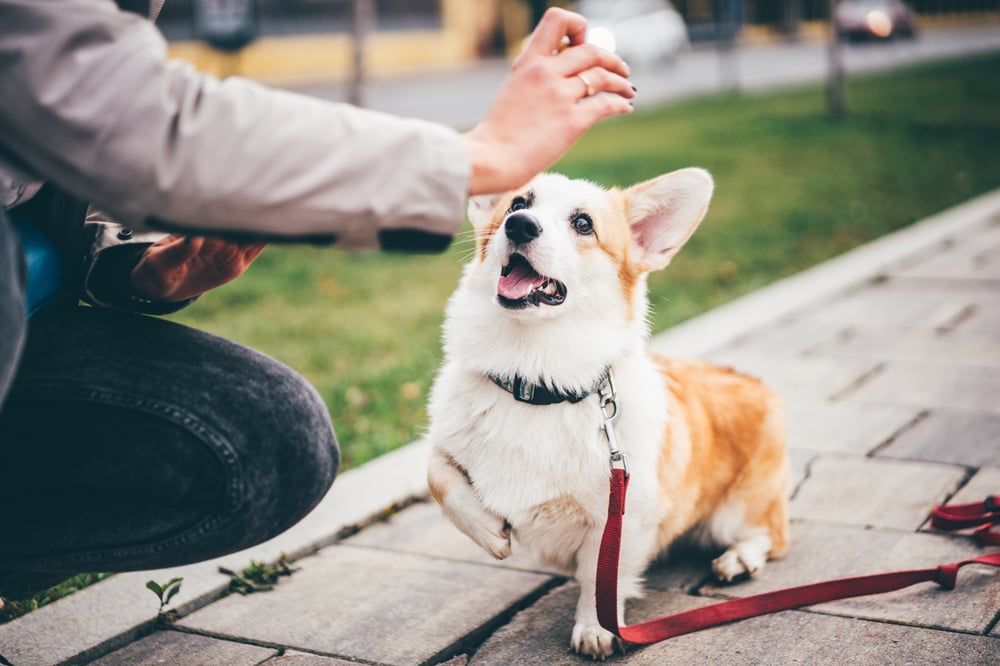
Congratulations! You’re about to become a pet pawrent. In the same way that puppies are like human babies, they also require a lot of time, attention, love, and patience.
Your puppy will need plenty of training and socialization in order to grow into the best possible version of itself. The first few months at home with your new companion will be crucial for their development – so make sure you’ve got everything covered by following our puppy prep list and tips carefully, and when in doubt, ask your vet. They are the experts, after all, and can help answer specific questions about the needs and development of your puppy.
And one of the best ways to support their development? Adding a supplement like TRI-ACTA for pets to their daily routine. With all the support their growing bodies need, TRI-ACTA for pets helps make sure joints, muscles, and soft tissues are healthy and strong as they grow. If concerns like dog muscle injuries and arthritis come up later, or you want to ease their recovery from their spay or neuter surgery, you can be sure to turn to TRI-ACTA H.A. for pets to get the job done. The addition of hyaluronic acid helps make sure joints are well lubricated, aids inflammation, and helps your dog can move around pain-free.
TRI-ACTA H.A. for Pets
Our maximum strength formula is optimally designed to accelerate the formation of cartilage, minimize inflammation, expedite the healing process, and improve joint conditions.
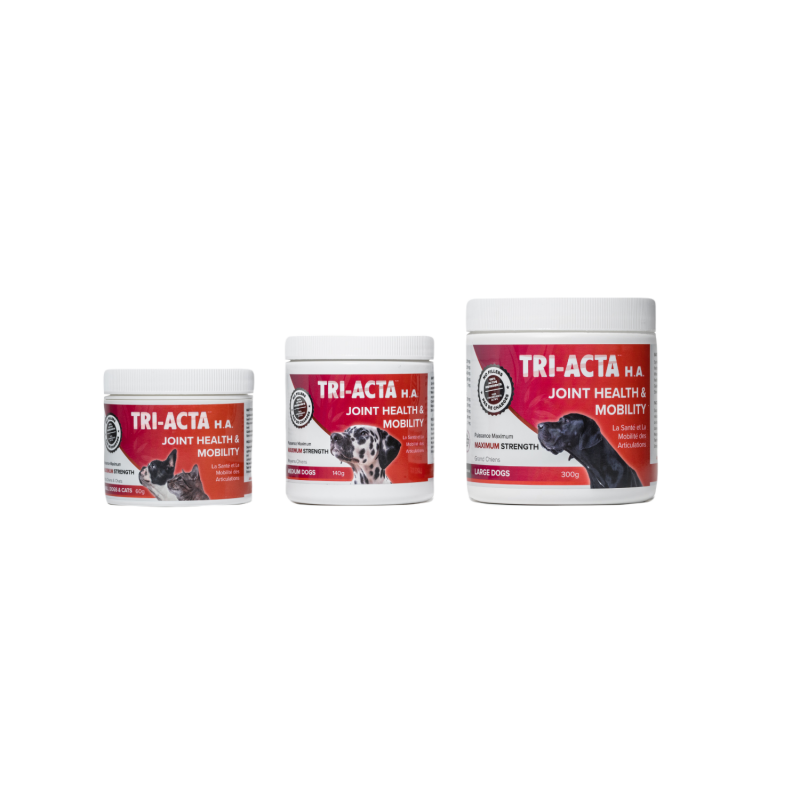
Find out more about dog health and wellness on our blog, and find out where to buy TRI-ACTA for pets so you can avoid a ruff start to your puppy’s life.
Newsletter Signup
Subscribe to our newsletter to receive the latest news and exclusive offers.
.jpg?height=2000&name=Cliick_Integricare-DISPLAY-REVISEDV2%20(1).jpg)
Proactive & Therapeutic Joint Supplements
When given daily, Integricare joint supplements recover bone and joint injuries faster and help prevent mobility injuries from happening in the first place.

